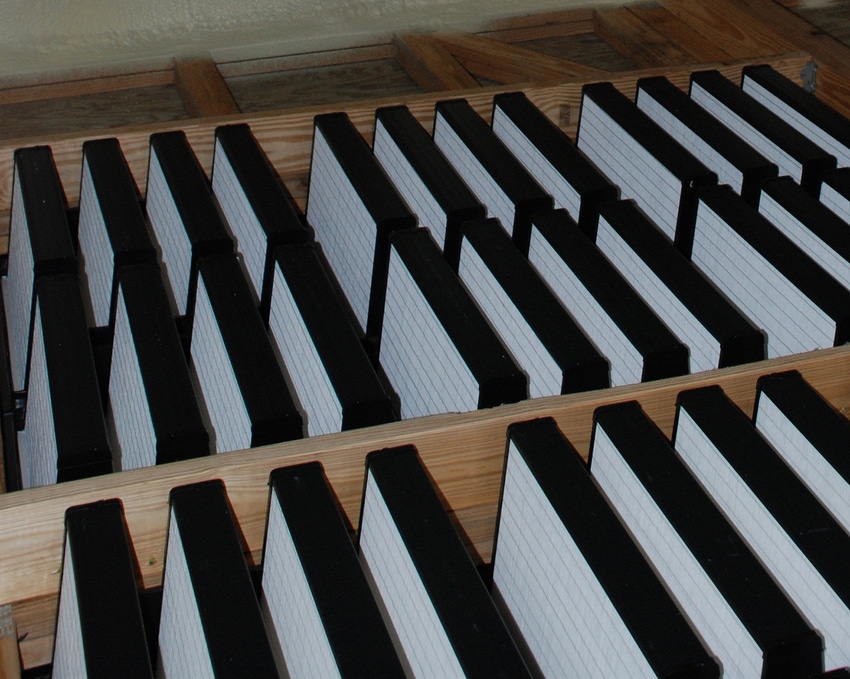Fresh air filtration can be implemented as a method to reduce the frequency of aerosol disease introductions and ultimately, improve profitability.
December 20, 2017

By Brett C. Ramirez and Ben C. Smith, Iowa State University Department of Agricultural and Biosystems Engineering
The U.S. swine industry faces many diseases that detrimentally affect the health and productivity of pigs throughout all stages of production. Common routes of disease transmission include oral, direct contact, fomites, vectors, zoonotic and aerosol. The risk of infection via each transmission route can be reduced with multiple biosecurity procedures, which are management dependent for successful implementation.
However, aerosol transmission is often addressed based on a facility’s location with infection risk mitigated by improving indoor air quality through air filtration or ventilation system improvement. Fresh air filtration can be implemented as a method to reduce the frequency of aerosol disease (e.g., porcine reproductive and respiratory syndrome and Mycoplasma hyopneumoniae) introductions and ultimately, improve profitability. This column goes through the basics and mechanics of air filters to provide readers with some background on air filters commonly used in the swine industry.
Filters are used to remove gaseous and particulate matter contaminants from an air supply to improve indoor air quality. They exist in numerous forms and shapes, but still conform to a common set of terms. For most Heating, ventilation and air conditioning applications, filters are characterized as primary, secondary and final stage filters. Primary filters capture large size particulates (i.e., 5-10 micrometers), with high face velocities and high dust holding capacities. Examples of primary stage filters are low-efficiency panel or pad type filters that are typically disposable and easy to install. The sole purpose of a primary filter is to extend the life span of the secondary filters. Secondary filters capture finer particles (i.e., 0.5-5 µm), with a finer media. Examples of secondary stage filters are bag or pocket type with an extended media surface area through extended depth or pleated media. Final stage filters or HEPA filters have a strict rating system based on the removal efficiency. Specifically, HEPA filters are rated for particles with sizes <0.5 µm. To be considered a HEPA filter, the filter must have a 99.97% removal efficiency of 0.3 µm. For the filters used at each stage, there are numerous characteristics that must be understood and considered when choosing a filter based on performance.
The performance of a filter is evaluated by several key components. The most common performance value for any filter is the removal efficiency, characterized by the Minimum Efficiency Reporting Value in the United States. The MERV classifies filters from 1 (least efficient) to 20 (highest efficient). For example, primary stage filters are MERV 1 to 8, secondary stage filters are MERV 9 to 16, and final stage filters are MERV 17 to 20 (note, HEPA filters have additional testing standards to be considered HEPA). Removal efficiency alone cannot be used to characterize a filter’s performance, airflow and overall removal performance must also be included.
Filter resistance, also commonly referred to as filter pressure drop, describes the pressure drop across the filter that achieves the rated airflow for that filter. Rated airflows are typically set by the individual manufacturer and can vary considerably across filter stages and manufacturers. It should be noted that these filters are often rated at a static pressure that is higher than the normal operating static pressure used in swine housing, so a filter with a rating of XX cubic feet per minute filter is not really capable of that resistance in our systems. Filter resistance is useful for determining the number of filters needed for a designed ventilation rate and the required fan capacity. It can also be a metric for determining filter end of life. During testing, a filter is loaded with synthetic dust until the manufacturer’s end of life pressure drop is reached or the arrestance of the filter drops below 75%.
Another term, arrestance, is the ability of a filter to remove 3-10 µm dust as a percent of the total dust in the air and typically calculated for filters with less than 20% overall efficiency. Arrestance values for filters are typically reported on filters MERV 4 and below. For the dusty and dynamic ambient environments many swine facilities are exposed to, understanding the relationship between arrestance and filter resistance is important.
When assessing the cost of filters, it is essential to keep a few items in mind. The primary stage filter is used to extend the life span of the secondary stage filters and the cost of a primary filter is typically less than a secondary stage filter, which has a higher efficiency. When considering the cost and capacity, the lower capacity filter typically will have a higher cost than that of a higher capacity filter. Further, the lower capacity filter will need to be replaced more frequently. The primary stage filter can affect the long-term cost of a filtration system if improperly selected and managed. The frequency of the secondary stage filter replacement is dependent on the environmental conditions and the primary stage filter characteristics. These considerations must be factored into the long-term planning of a system for optimal economic return.
Filters are increasing in popularity and an effective method at reducing the risk of aerosol disease transmission. However, understanding the common terminology, ratings and economics of filtration systems are complicated. Filters are typically arranged with a primary stage filter (with lower MERV rating, higher capacity and lower cost) followed by a secondary stage filter (with higher MERV rating, lower capacity and higher cost). Factoring all this together is critical for making filtration decisions.
You May Also Like



